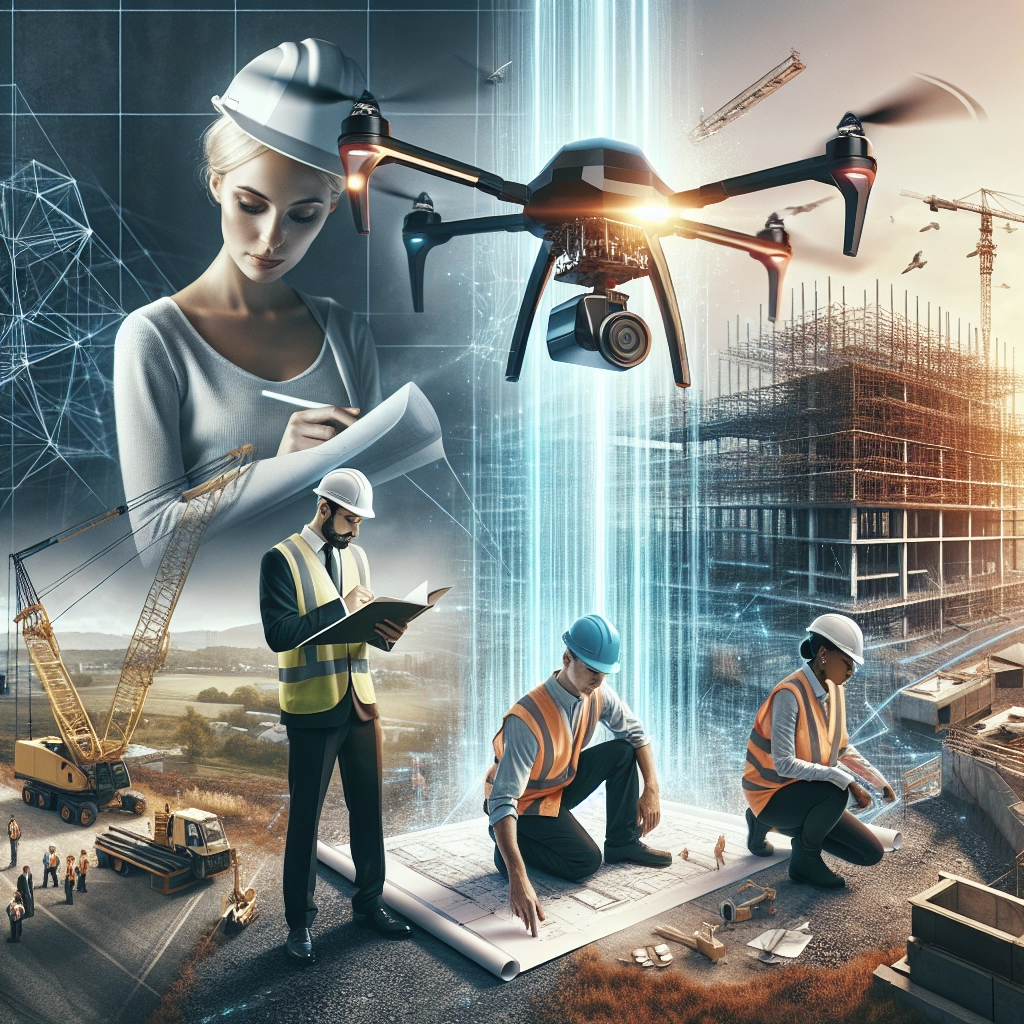
- Published on
- Authors

- Name
- ric de yuga 😄
🚁 Revolutionizing Construction with Drones and LiDAR 🚁
The construction industry is embracing a technological revolution, with drones and Light Detection and Ranging (LiDAR) systems at the forefront. These tools are not just modernizing traditional practices; they are redefining them, offering unprecedented accuracy and efficiency in construction planning and execution.
Key benefits have already become apparent:
- 🌐 Comprehensive site analysis
- 🕒 Real-time project monitoring
- 🏗️ Enhanced safety on construction sites
These technologies are proving to be indispensable for modern construction projects, paving the way for more sophisticated and streamlined operations.
📍 Precision Mapping with LiDAR 📍
LiDAR technology uses laser light to create high-resolution maps that are significantly more precise than those produced by traditional surveying tools. This capability is crucial for the construction industry, where detailed topographical data is essential for planning and design.
| Application | Benefit |
|---|---|
| Terrain Mapping | Identifies potential issues before construction |
| Volumetric Measurements | Ensures accurate material estimates |
| Structural Modeling | Aids in the visualization of finished projects |
LiDAR's ability to penetrate vegetation and capture ground surface data even in densely forested areas makes it invaluable for site planning in challenging locations.
🕊️ Drones: A Bird's Eye View for Better Management 🕊️
Drones transform construction site management by providing aerial views that offer insights unreachable by ground-based observation. Equipped with cameras and LiDAR, drones can survey a construction site in minutes, providing data that would traditionally take weeks to gather.
| Advantage | Impact |
|---|---|
| Monitoring Progress | Keeps projects on schedule and within budget |
| Inspecting Hard-to-Reach Areas | Reduces the need for manual inspections |
| Enhancing Safety | Minimizes risks by identifying hazards early |
By deploying drones, construction managers can frequently update stakeholders on project status, make informed decisions, and respond swiftly to any emerging issues.
🌍 Sustainable Development through Advanced Tech 🌍
The integration of drones and LiDAR also promotes sustainable construction practices. These technologies minimize the need for physical alterations to the land during the surveying phase and reduce the carbon footprint associated with traditional surveying methods.
Furthermore, the precise data collected helps in optimizing material usage and reducing waste, contributing to more eco-friendly construction practices.
🏗️ The Future Landscape of Construction 🏗️
Looking ahead, the potential applications of drones and LiDAR in construction are boundless:
- Automated Construction Machines: Drones and LiDAR data could guide autonomous construction machinery, further reducing the need for manual labor.
- Integration with BIM (Building Information Modeling): Enhanced 3D modeling that incorporates real-time data for better design and management.
- Improved Regulatory Compliance: Precise mapping and monitoring to adhere strictly to environmental and building regulations.
The adoption of these technologies is not just enhancing current practices but is also paving the way for future innovations that will continue to transform the industry.
🌟 Building Smarter, Safer, and Faster 🌟
The marriage of drones and LiDAR technology in construction marks a significant leap towards more intelligent, efficient, and safe building practices. As these technologies continue to develop and become more integrated into everyday construction activities, the industry stands on the brink of a new era of digital construction.
This shift not only promises improved operational efficiencies and cost reductions but also aligns with broader goals of sustainability and innovation. Embracing these tools today means building the smarter cities of tomorrow, with each project managed more efficiently and sustainably than ever before.
Let’s soar to new heights with drones and LiDAR, revolutionizing construction landscapes for a brighter, more efficient future.
